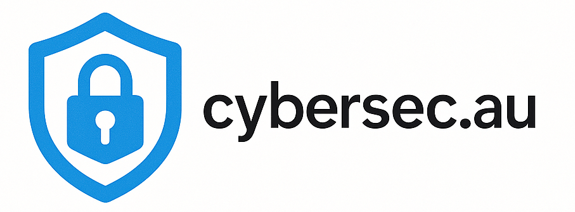Security Information and Event Management (SIEM) is a comprehensive security solution that provides real-time analysis of security alerts generated by applications and network hardware. For Australian businesses, SIEM platforms serve as the central nervous system for cybersecurity operations, enabling rapid threat detection and response.
🔍 Key SIEM Benefits
- Centralized security monitoring and log management
- Real-time threat detection and alerting
- Compliance reporting and audit trail maintenance
- Incident investigation and forensic analysis
How SIEM Works
SIEM platforms operate through a multi-stage process that transforms raw security data into actionable intelligence:
1. Data Collection
SIEM systems collect security data from multiple sources:
- Network devices: Firewalls, routers, switches, and intrusion detection systems
- Servers and endpoints: Operating system logs, application logs, and security events
- Security tools: Antivirus, EDR, and vulnerability scanners
- Cloud services: AWS CloudTrail, Azure Activity Logs, Office 365 audit logs
- Applications: Database logs, web server logs, and custom applications
2. Data Normalization
Raw log data is processed and standardized:
- Parsing: Extract relevant fields from different log formats
- Enrichment: Add context such as geolocation and threat intelligence
- Correlation: Link related events across different systems
- Categorization: Classify events by type and severity
3. Analysis and Correlation
Advanced analytics identify potential security threats:
- Rule-based detection: Predefined rules for known attack patterns
- Behavioral analysis: Machine learning to detect anomalies
- Threat intelligence: Integration with external threat feeds
- Statistical analysis: Baseline establishment and deviation detection
4. Alerting and Response
Generate alerts and enable response actions:
- Alert generation: Create prioritized security alerts
- Notification: Send alerts to security teams via multiple channels
- Automated response: Trigger automated containment actions
- Case management: Track investigation and resolution progress
Core SIEM Capabilities
Log Management
Comprehensive log collection and storage:
- Centralized collection: Aggregate logs from all sources
- Long-term retention: Store logs for compliance and investigation
- Search and retrieval: Fast search across historical data
- Compression and archiving: Efficient storage management
Real-Time Monitoring
Continuous security event monitoring:
- Dashboard visualization: Real-time security status displays
- Event correlation: Link related security events
- Threshold monitoring: Alert on unusual activity levels
- Trend analysis: Identify patterns and trends
Incident Investigation
Tools for security incident analysis:
- Timeline reconstruction: Chronological event analysis
- Pivot analysis: Explore related events and indicators
- Threat hunting: Proactive search for hidden threats
- Forensic analysis: Detailed investigation capabilities
Compliance Reporting
Automated compliance and audit reporting:
- Regulatory reports: PCI DSS, ISO 27001, Privacy Act compliance
- Custom dashboards: Executive and operational reporting
- Audit trails: Complete activity logging and tracking
- Scheduled reports: Automated report generation and distribution
SIEM Implementation for Australian Businesses
Cloud-Based SIEM
Software-as-a-Service SIEM solutions:
- Advantages: Rapid deployment, automatic updates, scalability
- Popular solutions: Microsoft Sentinel, Splunk Cloud, IBM QRadar on Cloud
- Considerations: Data sovereignty, internet connectivity requirements
- Best for: Small to medium businesses, cloud-first organizations
On-Premises SIEM
Traditional on-site SIEM deployments:
- Advantages: Complete data control, air-gapped environments
- Popular solutions: Splunk Enterprise, IBM QRadar, LogRhythm
- Considerations: Higher infrastructure costs, maintenance overhead
- Best for: Large enterprises, highly regulated industries
Hybrid SIEM
Combination of cloud and on-premises components:
- Advantages: Flexibility, data sovereignty with cloud benefits
- Architecture: On-premises collection with cloud analytics
- Use cases: Multi-site organizations, compliance requirements
SIEM Selection Criteria
Technical Requirements
- Data ingestion capacity: Volume of logs per day
- Search performance: Query speed across large datasets
- Integration capabilities: APIs and connectors for existing tools
- Scalability: Ability to grow with business needs
Operational Considerations
- Ease of use: User interface and analyst workflow
- Customization: Ability to create custom rules and dashboards
- Automation: Automated response and orchestration capabilities
- Support: Vendor support quality and availability
Cost Factors
- Licensing model: Per-device, per-GB, or user-based pricing
- Infrastructure costs: Hardware, storage, and network requirements
- Professional services: Implementation and training costs
- Ongoing maintenance: Support and operational expenses
Working with SIEM Implementation Partners
Many Australian businesses partner with experienced cybersecurity MSPs for SIEM implementation and management. Leading providers like Affinity MSP offer comprehensive SIEM services including:
- SIEM platform selection and architecture design
- Implementation and configuration services
- Custom rule development and tuning
- 24/7 monitoring and analysis
- Incident response and investigation support
Implement Professional SIEM Solutions
SIEM implementation requires expertise in security operations and data analysis. Partner with Australia's leading cybersecurity specialists for comprehensive SIEM deployment and management.
Get SIEM Implementation Support